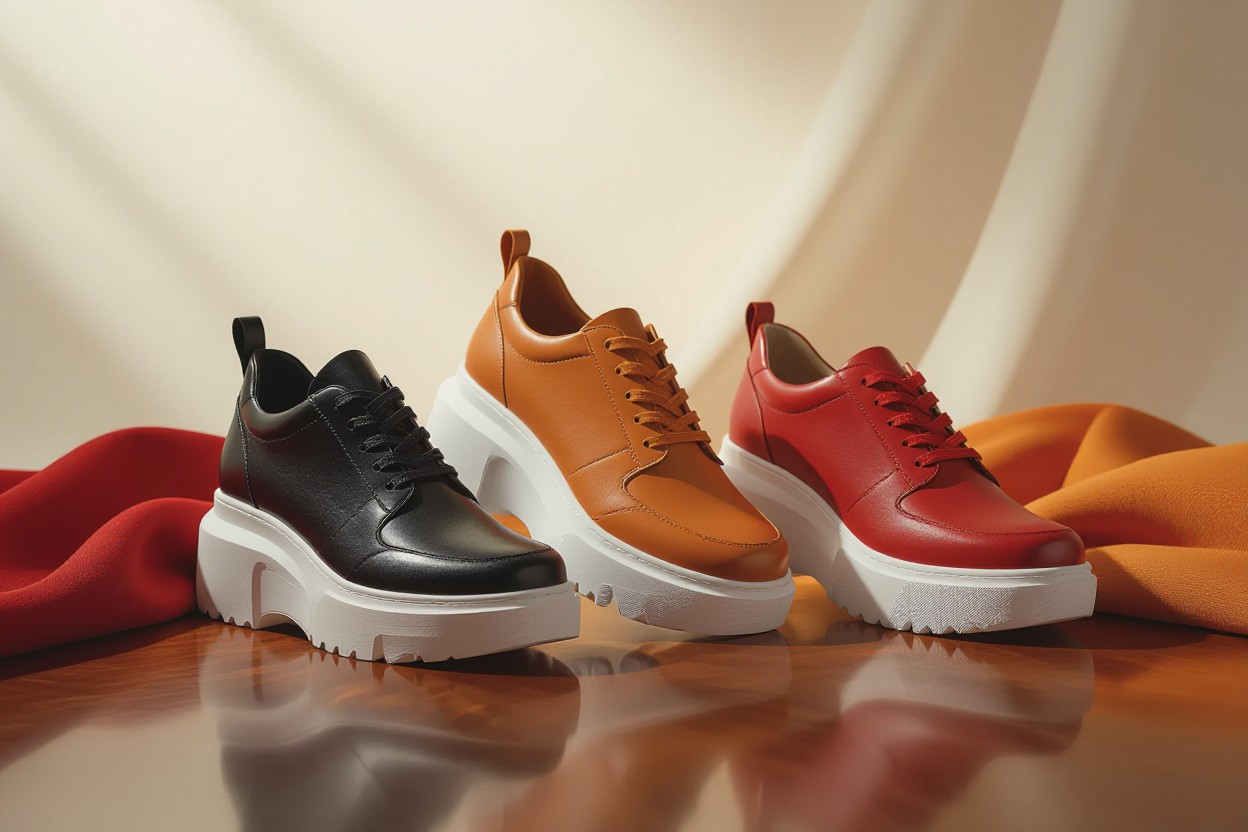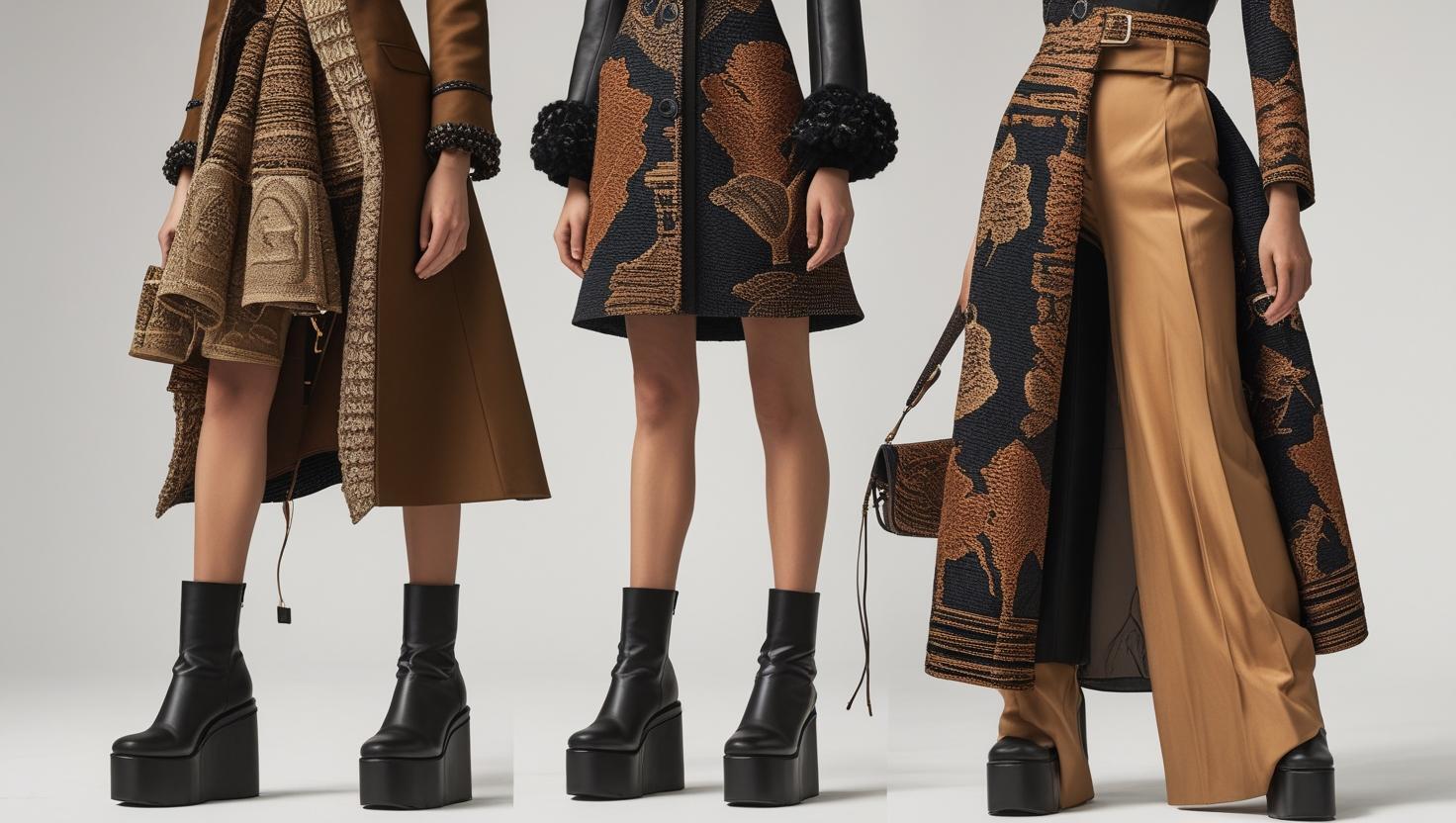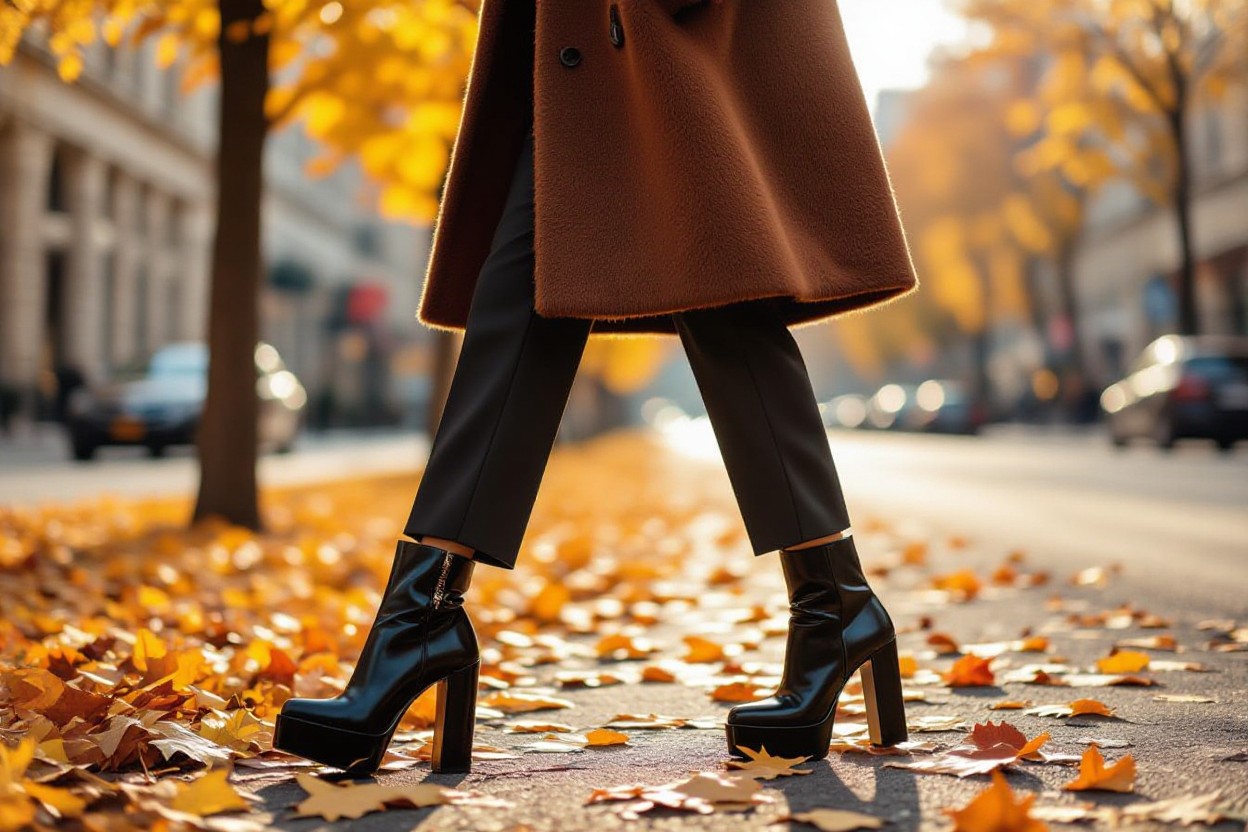7th Aug 2025
Elevate Your Style: Why Power Platforms Are Dominating Fall/Winter 2025

Over fall/winter 2025, you’ll see power platforms reshape runways and streets, offering height, comfort, and bold silhouettes for your wardrobe. They bring effortless elevation to coats and wide-leg trousers, but be mindful of stability and proportion to avoid awkward lines. Embrace them to make a confident, fashion-forward statement that balances utility with high-impact style.

The Rise of Platforms: A Historical Perspective
You can trace the platform story back to the 1970s, when stacked soles and flared trousers defined a generation; designers and consumers embraced height as a statement. The 1990s revival—spurred by pop acts like the Spice Girls—reintroduced exaggerated soles to mainstream wardrobes. Today, platforms typically add 2–3 inches of height while preserving stability, which explains why they’ve resurged as a practical way for you to elevate both silhouette and comfort.
Retro Revival: The 70s Influence on Modern Fashion
Design details from the 70s—high waists, wide hems, embroidered blouses—keep resurfacing, and you see them polished with modern tailoring for Fall/Winter 2025. Pairing flared jeans with platforms reproduces that era’s vertical line but with contemporary materials and finishes; vintage proportions meet technical comfort, so your outfit reads both nostalgic and refined without feeling costume-y.
From Runways to Street Style: How Platforms Captured Attention
Runways across London, Milan and New York gradually reintroduced platforms over several seasons, then street-style photographers amplified the trend as celebrities and influencers translated show looks into everyday outfits. When you wear platforms with flares, the hem falls properly and your proportions lengthen—an effect editors and street-style stars have repeatedly photographed, turning designer experiments into high-demand retail items.
Digging deeper, you’ll notice a clear diffusion path: designers test exaggerated soles in collections, influencers adopt wearable variations, and retailers scale the most practical versions. Examples include platform loafers and raffia sandals that moved from lookbooks into fast-selling capsules, while celebrities like Dua Lipa and Hailey Bieber have been photographed pairing chunky-soled shoes with vintage-inspired flares, accelerating demand. For your wardrobe, aim for platforms that balance height with a stable base—typically 2–3 inches—for the optimal hem length and walkability; this prevents dragging and keeps the retro aesthetic visually modern and functional.
The Aesthetic Appeal of Power Platforms
Power platforms instantly amplify your look by adding height and visual authority without sacrificing comfort; you’ll notice most street-ready styles sit in the 2–3.5 inch (5–9 cm) range for daytime wear. Pairing them with tailored flares or wide-leg trousers creates a long, uninterrupted line that reads modern and retro at once—think the raffia Dolce Vita heels or faux-wood clogs you saw earlier, but scaled for colder months and sleeker silhouettes.

Enhancing Silhouettes: The Flattering Effect on Proportions
Stacked soles shift proportions to favor length: a 2–3 inch platform can make your legs appear markedly longer while keeping your torso balanced, especially if you choose high-waist flares or cropped coats. You’ll get a pronounced hourglass effect without compressing your midsection, and the extra sole depth lets hems fall cleanly—ideal if you wear heavier fabrics like wool or leather for Fall/Winter 2025.
Color and Material Trends: What’s Hot for Fall/Winter 2025
Expect a palette of jewel tones (emerald, oxblood), rich earth hues (camel, olive) and tactile neutrals, with metallic accents for evening looks. Materials mix classic leather and suede with seasonal textures like raffia trims, faux wood platforms and recycled-fiber uppers; pieces such as the Putu boots and Cushionaire clogs illustrate that contrast—chunky sole, refined finish—dominating runways and retail drops this season.
Match materials to function: raffia and woven details read daytime and festival-chic, patent or metallic leathers elevate evening outfits, while shearling-lined or suede platforms handle colder temperatures. Pay attention to care—suede needs spray protection, patent shows scuffs—and be wary of extremes: platforms above ~3.5 inches (9 cm) can reduce stability, so choose a height that complements your gait and the layered proportions you build with flared trousers and outerwear.
Versatility in Footwear: Matching Platforms with Flared Jeans
Pairing platforms with flared jeans lets you shift aesthetics with one shoe swap: swap the CUSHIONAIRE faux-wood clogs for a festival-ready boho look, slide into Coach Leah loafers for a polished office silhouette, or choose adidas-style platform sneakers for weekend ease. Pay attention to the hem — aim for the jean to just skim the shoe so the flare falls cleanly and avoids dragging, and match finishes (denim wash vs. raffia, suede or patent) to keep proportions balanced and visually lengthen your legs.
Casual to Chic: Navigating Different Style Pairings
Choose light-wash flares with the Adidas Bravada 2.0 platforms and a cropped tee for an authentic retro-casual look, or pair dark, structured flares with the Nine West Verge loafer pumps and a tailored blazer for business-casual polish. Contrast textures—distressed denim with raffia Dolce Vita heels or satin flares with chunky Putu boots—to signal mood; neutral platforms elongate, while bold colors turn your shoes into the outfit's focal point.
The Importance of Comfort: Choosing the Right Platform Height
Opt for platform heights between about 1–3 inches for all-day wear—this range offers lift without excessive pitch—and favor a broad base or block heel for stability. Test any unfamiliar pair by walking at least 10–15 minutes in-store; avoid designs that create a steep incline or foot slide, since platforms above 4 inches can significantly raise ankle and knee injury risk.
Measure the effective heel drop: a 3-inch heel with a 1.5-inch platform yields a 1.5-inch pitch, which most people find manageable for extended wear. Look for a platform sole with at least a 1-inch thickness under the forefoot to reduce heel-to-toe angle; brands like Cushionaire and Madewell often specify sole height in the product notes—use those figures to compare. Add gel pads or a thin orthotic if the ball-of-foot feels tense, and prioritize a boxed toe or wider forefoot if you plan multi-hour wear. Try stepping up and down curbs and standing for 30 minutes before committing to an event; that quick test reveals slippage, arch support sufficiency, and whether the flare length will drag. For evening looks where you accept a bit more height, keep the platform base chunky and the ankle secure to mitigate wobble and reduce risk.
Wearing Platforms Like a Pro: Styling Tips and Tricks
Pair high-waisted flared jeans with 2–3-inch platforms (5–7.6 cm) to lengthen your leg line and let hems fall cleanly without dragging; this also gives you added stability over stilettos. Tuck in a fitted top or add a cropped blazer to keep your waist visible and balance volume, and prefer neutrals or matched shoe-and-bag tones to create a continuous vertical line. Avoid platforms taller than 4 inches for everyday wear to reduce trip risk. Assume that you test walk on a 3-inch sole before committing to a full day out.
- flared jeans
- platforms
- platform loafers
- ankle boots
- boho chic

Dos and Don’ts for Flared Jeans and Platform Styles
Do hem your flares so they just skim the platform sole and pick a stable 1–3-inch platform for everyday comfort; that keeps proportions flattering and prevents fabric from dragging. Do pair wide hems with a slightly fitted top to preserve shape. Don’t choose excessively long or frayed hems that catch under platforms, and avoid slick soles—those create trip hazards you don’t want on city streets or stairs.
Accessorizing for Impact: How to Elevate Your Look
Anchor your silhouette with a belt at the natural waist—2–4 cm for minimal, 5–7 cm for a retro statement—and coordinate hardware between belt, bag, and shoes to maintain cohesion. Add one statement piece (a bold earring or oversized cuff) while keeping other jewelry minimal so your outfit reads intentional, and match shoe color to either bag or top to amplify the elongating effect.
Match textures to denim weight: pair heavy, rigid flares with suede or leather platforms for a cohesive aesthetic, and softer, feathered denim with raffia or woven platforms for a boho vibe. Use concrete combos you’ve seen work on the street—try Madewell The Vintage Flare Jean with Dolce Vita raffia heels for weekend energy, or Mango Fiona flares with Putu platform boots for a night edit. Limit yourself to one bold accessory plus subtle accents so your proportions stay balanced and your look remains polished.
Cultural Shifts and the Platform Trend
Cultural appetite for nostalgia—from '70s silhouettes to Y2K references—has nudged platforms into everyday wardrobes, and you can feel the shift in both street style and office edits. Designers are responding with gender-fluid cuts and utility-driven soles, so platforms function as aesthetic and practical pieces at once. Photographers, stylists and retail buyers now treat them as wardrobe staples, with platforms offering visible height, better posture and versatile pairing options for your outfits.
The Role of Social Media in Fashion Evolution
Short-form video on TikTok and Instagram Reels compresses trend cycles and turns runway moments into viral consumer demand; TikTok surpassed 1 billion monthly users, amplifying looks overnight. You can watch a platform silhouette rack up views and inspire rapid retail drops in days, as micro-influencers and styling clips convert attention into purchases and mainstream adoption.
Empowerment through Style: Platforms as a Statement
Platforms act as a visual language of confidence—celebrities and performers deploy chunky soles to dominate presence and command attention. When you pick platforms, you project authority and individuality, breaking conventional footwear norms; that added height and bold silhouette amplify perceived influence whether you're presenting, socializing, or navigating the city.
You gain measurable benefits: platforms typically add 2–4 inches of height while maintaining a lower heel-to-toe pitch than comparable heels, which improves balance and eases forefoot pressure. For daily wear, choose 2–3 inch platforms; select 3–4 inches for statement looks, and pair them with high-waist flares or tailored trousers to maximize leg length and professional polish.
Final Words
With these considerations you can confidently adopt power platforms for Fall/Winter 2025: they elevate your proportions, blend comfort with bold design, and anchor both tailored and casual looks. Prioritize structured soles, quality materials, and balanced silhouettes so your outfits feel deliberate, modern, and effortlessly commanding all season.
